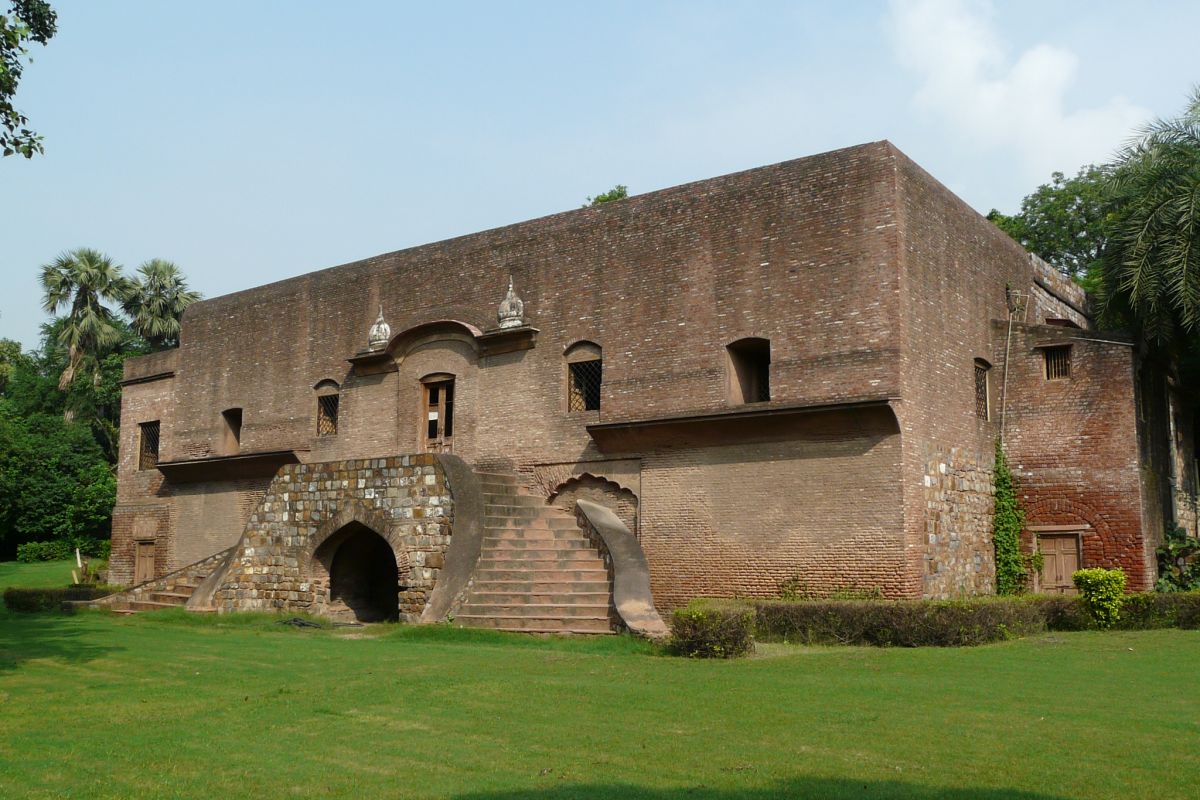Delhi PWD Minister inspects development projects
During the inspection, Minister Pravesh Verma took stock of three important projects. The first is from Bhoro Marg to Sarai Kale Khan where road strengthening work is going on till the ring road.
John Nicholson led the assault on Delhi in 1857. A century and a half after the event, the city has, of course, changed…

Qudsia Bagh in Delhi. (Photo: Varun Shiv Kapur/Wikimedia Commons)
While researching his book, Cult of a Dark Hero: Nicholson of Delhi, Stuart Flinders of the BBC says he attempted to retrace John Nicholson ’s footsteps as he led the assault on Delhi in 1857. A century and a half after the event, the Mughal city has, of course, changed…
“The distinction between the compact city the British found, Shahjehanabad, and the one they created, New Delhi, remains as clear as ever, at least in the areas around government buildings, but both are dwarfed by the sprawl that has emerged since the British left in 1947. Even the river has changed course, a busy highway now skirting the Red Fort where the Yamuna, or Jumna as the British called it, once flowed,” observes Flinders.
Advertisement
He goes on to say, “The Ridge, where Nicholson waited impatiently for the assault, has resisted the urban advance just as it protected the British force assembled there during the long stalemate of summer, 1857. The only danger of attack as I made my way along the Ridge came from inquisitive monkeys springing onto the tarmac path from the bushes. A short ride in a taxi from there took me to the Alipur Road, along which Nicholson and his men marched on the morning of the fateful September 14. Part of the Qudsia Bagh, the garden, where the storming parties formed up into their columns, is still there. Lieutenant Richard Barter had noted the scent of roses mixed with the sulphur of the gums as they moved off towards the city wall. It was a wonderful surprise to find that roses were still being tended there nearly 160 years later, presumably in the very spot where anxious men had wished each other luck moments before the battle.
Advertisement
“In front of the garden, the city wall has been retained, including what remains of the Kashmir Bastion, over which Nicholson and his men clambered. Again, monkeys did the clambering as I stood watching in the shadow of one of the city’s new Metro railway lines overhead.
Then came the Kashmir Gate. It was from here that John Nicholson headed into the city before returning to follow the line of the wall to clear it of the enemy. The Kashmir Gate has been preserved, in spite of pressure from the growing transport terminal next door, and the area around it recently landscaped…
“Beyond, the wall disappeared, but a short distance along Lothian Road was a clue that I was still in Nicholson’s footsteps. There on the right was Nicholson Road, bounded on one side by shops and houses, on the other by another section of wall. For more than half a mile it was possible to imagine Nicholson himself here as he followed the wall, so little has it changed, but then modern Delhi broke in. Nicholson Road came to an abrupt end at the railway line leading to Old Delhi Station, built in the decade after his death…
“A short detour to cross the railway took me to where the Kabul Gate once stood. South of here, Naya Bazar Road follows the line of the wall, but where was Nicholson shot? Neither the Burn Bastion nor the Lahore Gate still exists. Walking in their direction, it was impossible to locate the spot with any precision. The men sitting in the narrow lane off Naya Bazar were unfamiliar with Nicholson’s name and were unable to help.
“It was not always so difficult. Lord Curzon, during his time as Viceroy in the first years of the 20th century, made the same journey from the breach near the Kashmir Gate. About 80 yards on from the Kabul Gate he would have found a plaque on the wall: ‘This tablet marks the spot where Brigadier-General John Nicholson was mortally wounded during the assault on the 14th September 1857…’ The wall and plaque in Delhi can be seen in photographs taken in the 1940s, but both have since been demolished.”
Despite what Flinders says in his email, a marble memorial tablet is still there in a gali of Khari Baoli on the side wall of the house, from atop which Nicholson was fatally shot and died almost a fortnight later of his wounds. Still Nicholson’s biography, published last year, makes interesting reading for Delhi’ites.
Advertisement